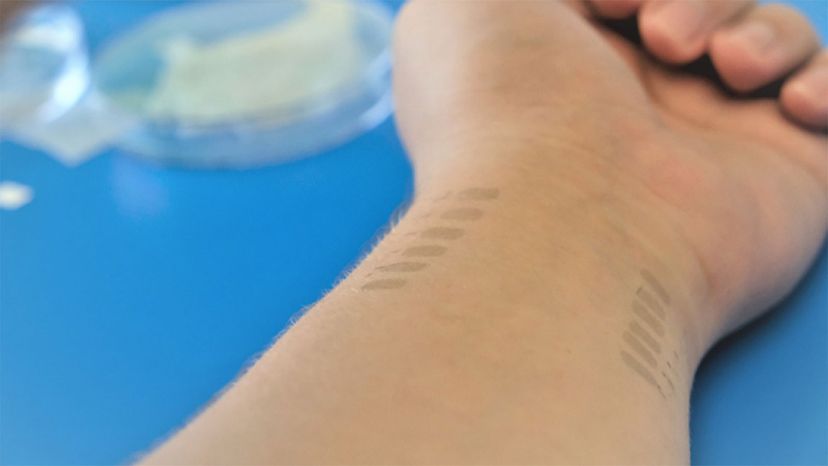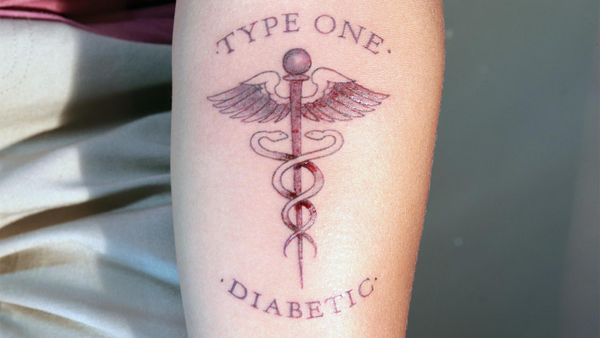The findings, outlined in the article "Continuous cuffless monitoring of arterial blood pressure via graphene bioimpedance tattoos," were published in the June 20, 2022, issue of Nature Nanotechnology, and developed with funding from the Office of Naval Research, National Science Foundation and National Institutes of Health.
The newly designed electronic tattoo is made with graphene, which is considered one of the strongest — and thinnest — materials in the world. The composition of graphene is similar to the graphite used in pencils, but when graphene is used as a temporary tattoo, it provides a waterproof way to measure the skin's electrical currents and the body's response to changes in blood volume. Prototypes of the electronic tattoo can be worn for up to a week to provide continuous blood pressure readings.
"With this new technology, we are going to have an opportunity to understand how our blood pressure fluctuates during the day. We will be able to quantify how stress is impacting us," Roozbeh Jafari, Ph.D., a professor of biomedical engineering, electrical engineering and computer science at Texas A&M and a co-author of the study, told WebMD.com.
The use of graphene has proven instrumental in the temporary tattoo's ability to accurately gather blood pressure data. Unlike, for example, the UV-monitoring temporary tattoos already on the market, graphene is so thin that it can eliminate the movement-caused data deterioration that can come with thicker tattoos that don't adhere as easily to the skin.
The raw data captured by the newly developed blood pressure tattoo must still be translated by a machine-learning algorithm into millimeters of mercury (mmHg), which is the typical unit of measurement for understanding blood pressure. The data can't yet be transmitted and read by applications on a smartphone or smartwatch; participants who wear the blood pressure tattoos must remain connected to a circuit board that translates the data.


